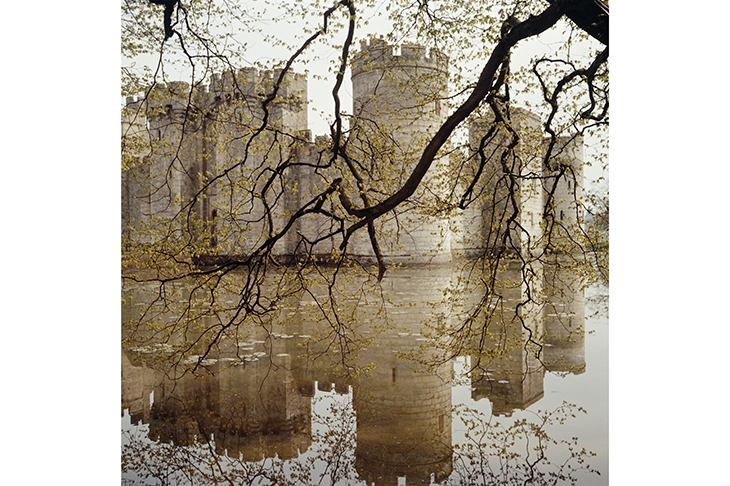The National Trust has brought out its ‘Interim Report’, with the clumsy title ‘Addressing our histories of colonialism and historic slavery’. Such use of the word ‘histories’, as opposed to ‘history’, is an alert that a woke view is coming your way. Like ‘diversity’ and ‘multiple narratives’ (also deployed in the report), it suggests plurality but imposes uniformity.
The aim is to be ‘historically accurate and academically robust’. According to John Orna-Ornstein, the Trust’s director of culture and engagement, ‘We’re not here to pass judgment on the past’. It is not true, as the BBC reported, that the Trust has ‘revealed’ that 93 of its properties are linked to slavery and colonialism. The report uncovers few new facts. But it is, in principle, a good thing to assemble information about the properties of a great heritage charity. Although bitty and hasty, the report is interesting about the various houses’ intricate connections in chapters called things like ‘Banking and Bankers’ or ‘Industrialisation and the Import of Cotton’. It ends with a ‘Gazetteer’ of the houses which ‘meet key criteria relating to slavery and colonialism’. These are incoherent. They range from ‘wealth connected to the proceeds of slavery’, through ‘expansion and settlement into countries resulting in the displacement or injury of people, or the creation of unequal economic benefits’, to ‘objects seized in battle’ in colonial territories. The first would usually be possible to ascertain. The second is tendentious and undoubtedly passes judgment on the past. The third — well, should the NT blush if it has a Zulu spear from Rorke’s Drift?
The report is heavily footnoted, but citing academics is not the same as being ‘academically robust’. In one chapter, the Trust’s head curator, Dr Sally-Anne Huxtable, says that the Capitalism and Slavery by Eric Williams is the ‘foundational text’ on the subject. Yet Williams, though distinguished, was a controversial anti-British politician (prime minister of Trinidad and Tobago). By contrast, the report disparages the work of the Trust’s own James Lees-Milne on country houses, because he was ‘often associated with the families he was writing about’. If Lees-Milne were black, it would praise this closeness as ‘lived experience’.
One of the report’s editors is Professor Corinne Fowler, director of the Colonial Countryside project at Leicester university, and author of Green Unpleasant Land: Creative Responses to Rural Britain’s Colonial Histories. She retweets things like ‘Rural racism means POC [People of Colour] don’t feel safe in there. The countryside is one of the last bastions of Empire’ and ‘Amid a global reckoning over the history of slavery one institution has remained silent: the British monarchy’. So we know what she wants the report to ‘find’. It contains no dissent. There are numerous citations of writers from the same school of thought, such as David Olusoga. William Dalrymple’s claim that the conquest of India ‘almost certainly remains the supreme act of corporate violence in world history’ is treated as incontestable fact. Despite the talk of ‘multiple narratives’, there is only one.
The details of the houses make the oddity of the project clearer. The entry on Bodiam Castle, a place I know well, points out, correctly, that it was rescued 200 years ago by a West Indian plantation owner, and later by Lord Curzon, who gave it to the Trust. Curzon gets it in the neck for opposing ‘demands from Indian nationalists for greater participation in government’. His Eastern Museum at Kedleston (also NT property) is ‘currently the subject of a re-presentation and interpretation project’. Are we supposed to think Bodiam is tainted by slavery and/or by Curzon’s vice-regal views? Will the rescued medieval ruin have to carry admonitory notices? Although the Trust emphasises that one or two of its properties — Peckover, Cliveden — are connected with saintly abolitionists, the report is a charge sheet and a hit list.
And here, in full, is an entry in the chapter on the Raj: ‘Sir Winston Churchill (1874–1965), whose family home is Chartwell (NT), served as Secretary of State for the Colonies from 1921 to 1922. He was Prime Minister during the devastating Bengal Famine of 1943, the British response to which has been heavily criticised. Churchill opposed the Government of India Act in 1935, which granted India a degree of self-governance. On 1 July 1947, he wrote to Prime Minister Clement Attlee (1883–1967), arguing that India should not gain independence.’ PS (not mentioned) he was also instrumental in defeating history’s greatest racist murderer.
It is not a mistake for the National Trust to publish all aspects of its properties’ history. But this report is not a useful handbook: it is a manifesto. This is betrayed by the use of the word ‘colonialism’ as if it were an objective term, and interchangeable with slavery. The report’s authors are NT curators. So this politicised, non-charitable bias is now NT dogma. Dr Huxtable tweets: ‘Quite honestly, I don’t think there is ever a time when some people won’t disagree with this or there isn’t some economic or social or political obstacle in the way. For me, now is a transformational time for the whole of society, and that includes the Trust.’ The appendix proclaims there’s more to come: the Trust ‘is committed to working with, and giving a voice to, source communities and experts who have lived, and/or have professional experience of, the legacies of slavery and colonialism in contemporary society’. An ‘independent external advisory group… many with lived experience’ will report to the Trust on ‘How can [it] continue to explore and share the histories of slavery and colonialism in its properties and collections, and engage people in these histories?’. From what has appeared this week, we can be confident that the Trust’s poor, Covid-hit six million members are now in for a long, grim ‘re-presentation and interpretation project’ designed to make them ashamed of being British.







Comments